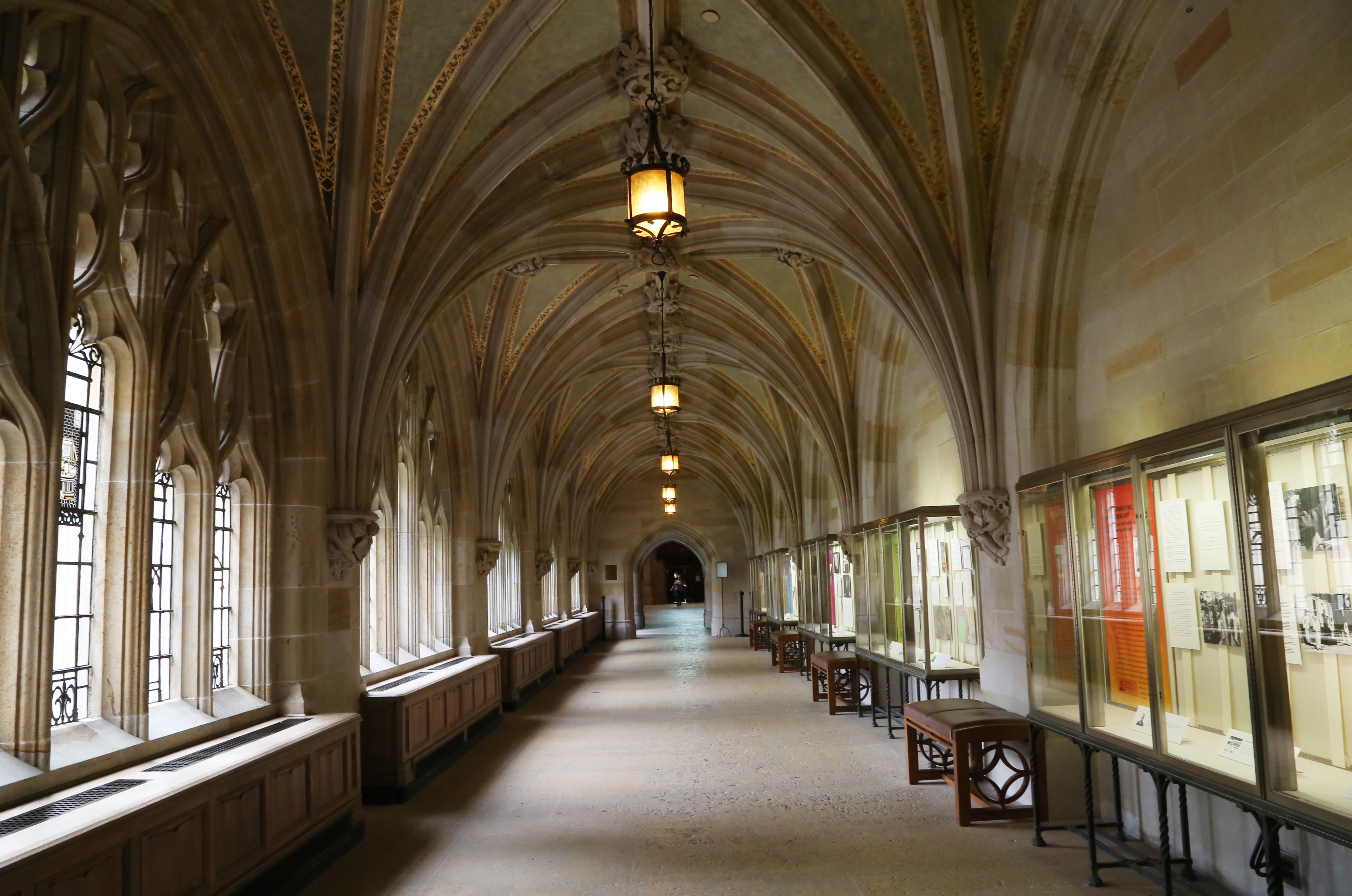
Just above the entrance to Sterling Memorial Library, a stone engraving tells visitors that the library is “the heart of the University.” But over the last decade, Yale librarians have struggled to keep the libraries relevant in students’ lives given an explosion of Internet resources just a few clicks away.
“Historically, whatever barriers we threw up — the hours we were open, understanding our idiosyncratic language, understanding our catalogue — students would have to find a way to overcome them because we were the only guys in town,” said University Librarian Susan Gibbons. “Now we have to think about ourselves as being in competition with other information sources that we think aren’t always as good as ours.”
Gibbons is responsible for all Yale libraries apart from the Law School and residential college libraries, managing around 15 million electronic and print volumes across 15 separate sites. Gibbons oversees a roughly $70 million budget and 499 professional and support staff, according to the latest data from the 2014–15 academic year available from the Association of Research Libraries’ Library Investment Index.
But Gibbons’ current responsibilities would astonish University librarians who came before her, few of whom could imagine the role would one day include the physical maintenance of library facilities, allocating millions of dollars in library budgets, managing Yale’s roughly 800 separate electronic content licenses and preserving about a petabyte’s worth of data — that is, 1,024 terabytes, or 1 million gigabytes.
Whereas previous University librarians primarily focused on adding to library collections, the role has become more complex as Yale’s library has grown into the globalized, digital age. In line with that new complexity, Yale’s current process for acquiring material involves many more steps than it used to.
Gibbons allocates funds for the acquisition to the library’s Director of Collection Development Daniel Dollar, who then allocates those funds toward specific subject librarians, who search for new material they hope to add within their areas of expertise. Once the subject librarian selects material, a separate team assists in the procurement of that material, and before any commitments are finalized, a Yale library lawyer helps negotiate contracts of sale and licensing.
“That kind of decision-making process is happening thousands of times over,” Gibbons said.
While many of Gibbons’ predecessors were Yale professors appointed to run the University library, she said library management now demands a specialized vocational training. Libraries across the Ivy League and at the country’s major research institutions are now headed by librarians with a bevy of academic and vocational qualifications beyond academia. Gibbons is no exception — in addition to her master’s degree in library science, she also has a master’s in history, an MBA and a doctorate in higher education administration.
Gibbons’ success in managing a library system that is both physically and electronically vast must be measured with metrics inapplicable to librarians of the last 300 years. But one measure of a library’s success that has always been a primary concern of Yale librarians is student engagement.
“The libraries have always been a place that students like to come to study,” Gibbons said. “We need to do a better job, and have been over the past 10 years, of really thinking about how we can make sure everyone is taking advantage of what we have to offer.”
One initiative designed to connect undergraduates with librarians is the Personal Librarian Program, which began its 10th year of operation this fall. Originally based on a program at the Yale medical school, the program matches each Yale College student with a research advisor for his or her entire undergraduate career.
However, despite efforts like these, students interviewed seemed unaware of or disinterested in the program. Of 11 students interviewed, only two had sought the help of their personal librarians.
David Rossler ’17 said he never felt a need to use the program, and Iva Velickovic ’14 LAW ’19 said she believes the program is more useful for graduate-level research.
Still, Isabelle Taft ’17, a former staff reporter for the News, said she used her personal librarian for research papers during her freshman and sophomore years.
“A lot of students don’t really use the library other than a space to work,” Taft added.
To tackle low awareness and involvement, the library system has encouraged professors and departments to integrate the library into their courses.
In an English 114 class, Roy Randen ’18 was assigned to take a selfie with his personal librarian for extra credit. Though he only asked his librarian a few questions during the encounter, he said their interaction was helpful.
Despite low engagement with library resources, some students feel Yale’s libraries are still vital to social and academic life.
“I love how I see my friends here,” Nyamal Tuor ’20 said. “The libraries are an integral part of the Yale community.”
Sterling Memorial Library opened in 1931.







